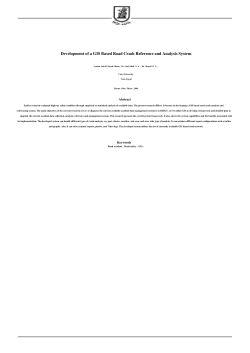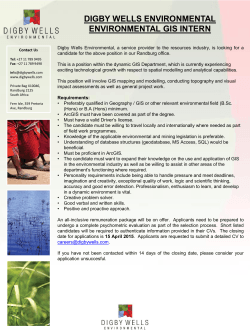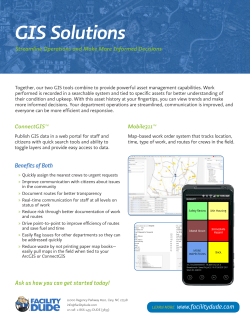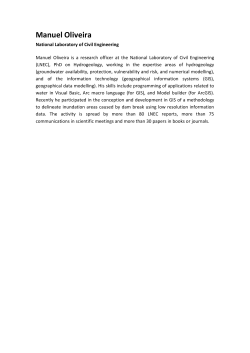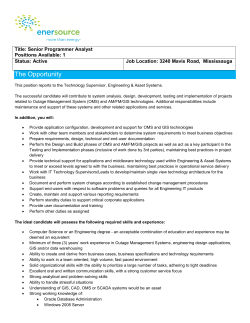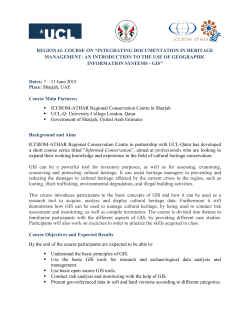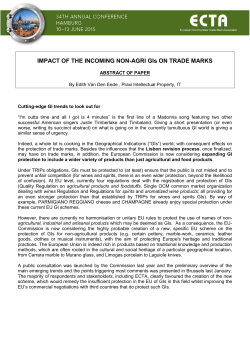
Answers and Sample Responses to Homework Questions: Unit 2 (Chapters 2-5)
Answers and Sample Responses to Homework Questions: Unit 2 (Chapters 2-5) Topics 1. General vs. Thematic Maps (Ch. 2) HW: p. 29 # 7 7. a) Features that are on general-purpose maps can include bodies of water, parks, roads, elevations, railway lines, towns and cities, political boundaries, latitude and longitude, and national and provincial parks. (you may have additional features in your answers as well; refer to p. 22) b) (Probably all features from your answer to 7a are shown on your road map) c) Features are shown using a variety of symbols and colours. For example, lakes are shaded blue and rivers are fine blue lines. Larger parks are shown with green shading. Roads are shown with red or grey lines of varying thicknesses and patterns. Towns and cities are shown with dots or squares. 2. Calculating Map Scales (Ch. 4) HW: p. 48 #5, 6, 8, 14, 15 5. Scale: 1 cm = 250 km The actual distance between the two places is 4250 km. 6. Scale: 1 cm = 30 km a) 2.5 cm + 1.3 cm + 1.9 cm = 5.7 cm The road distance between X and Y is 171 km. b) (2.8 + 1.9 + 3.5 + 0.9) cm = 9.1 cm The road distance between X and Y is 273 km. c) (3.8 + 1.6 + 1.9 + 0.9 + 1.6 + 6.3) cm = 16.1 cm The road distance between X and Y is 483 km. 8. Scale: 1 cm = 100 km (Draw these straight lines in your notebooks with the right length) a) line length = 2.99 cm b) line length = 8.34 cm c) line length = 5.71 NTCS / CGC1D / Chow 14. Convert 4 cm = 20 km to a RF scale. Step 1) Step 2) Step 3) Step 4) Step 5) 1: 500 000 (convert km to cm by x 10000) (write as a ratio because both units are the same) (divide both sides by 4, to reduce the first term to 1) The RF scale is 1 : 500 000 . 15. Convert 1.5 cm = 50 km to a RF scale. Step 1) 1.5 Step 2) Step 3) Step 4) Step 5) 1: 3 333 333 (convert km to cm by x 10000) (write as a ratio because both units are the same) (divide both sides by 1.5, to reduce the first term to 1) The RF scale is 1 : 3 333 333 . 3. Large-scale vs. Small-scale maps (Ch. 2) Activity: TTC Maps HW: Google Maps directions Done on handout 4. Compass Points and Bearings, Latitude and Longitude, Grid Systems (Ch. 3) HW: p. 43 #4, 5, 8, 13, military Grid worksheet 4. a) 0° or 360° b) 157.5° c) 22.5° 5. a) NE b) ESE c) WNW 8. This question may be more difficult than it appears. You have to first determine where north is from each diagram. It may help to rotate the book for #2-5. 1) N 2) NW 3) NE 4) E 5) S NTCS / CGC1D / Chow 5. Topographic Maps (Ch. 2) Assignment: Chandos Topographic Map This is the big mapping assignment you’re working on! 6. GPS (Ch. 3), GIS? (Ch. 5) HW: p. 43 #7, p. 57 #1-4 (all four questions were assigned as part of in-class work) p. 43 #7 7. (You can say that GPS is being used in just about any field where accuracy of position-finding is helpful or essential, refer to p. 39-40) GPS is used by hikers, drivers, pilots, and mariners (people who navigate the oceans). GPS has been applied to diverse fields such as archaeology, farming, forestry, prospecting and bus system operations. p. 57 #1-4 1. Geographic information systems (GIS) is an integrated software package for the input, management, analysis, and display of spatial information. GIS produces dynamic maps, meaning maps that can be modified by adding or removing layers of specific geographical information. (see p. 52, Figure 5-2) 2. a) A GIS map is created on a computer by stacking “layers” of specific geographic information. b) The layers of a GIS map can be manipulated by adding or removing layers of information to adapt the map to a particular purpose. The information in a particular layer may be changed by changing the information in the database. 3. Five day-to-day uses are listed on p. 51 getting 911 emergency services to your home planning water and sewage services deciding if there are enough children to justify building a new school making sure that the pizza you ordered gets to your home quickly showing the movement of air masses in the atmosphere to understand big problems, like global warming 4. a) The three main purposes of GIS are: i. to link geographic location (where things are) to descriptive information (what things are). e.g. linking an address to a specific person ii. to create maps with many different pieces of spatial information, arranged in layers on top of one another. The layers can be changed by the user to see how different pieces of information connect with each other iii. to help users analyze spatial information. GIS can help you answer important geography research questions by allowing you to “play with” the data shown on a map, and seeing what the results are. NTCS / CGC1D / Chow
© Copyright 2025
